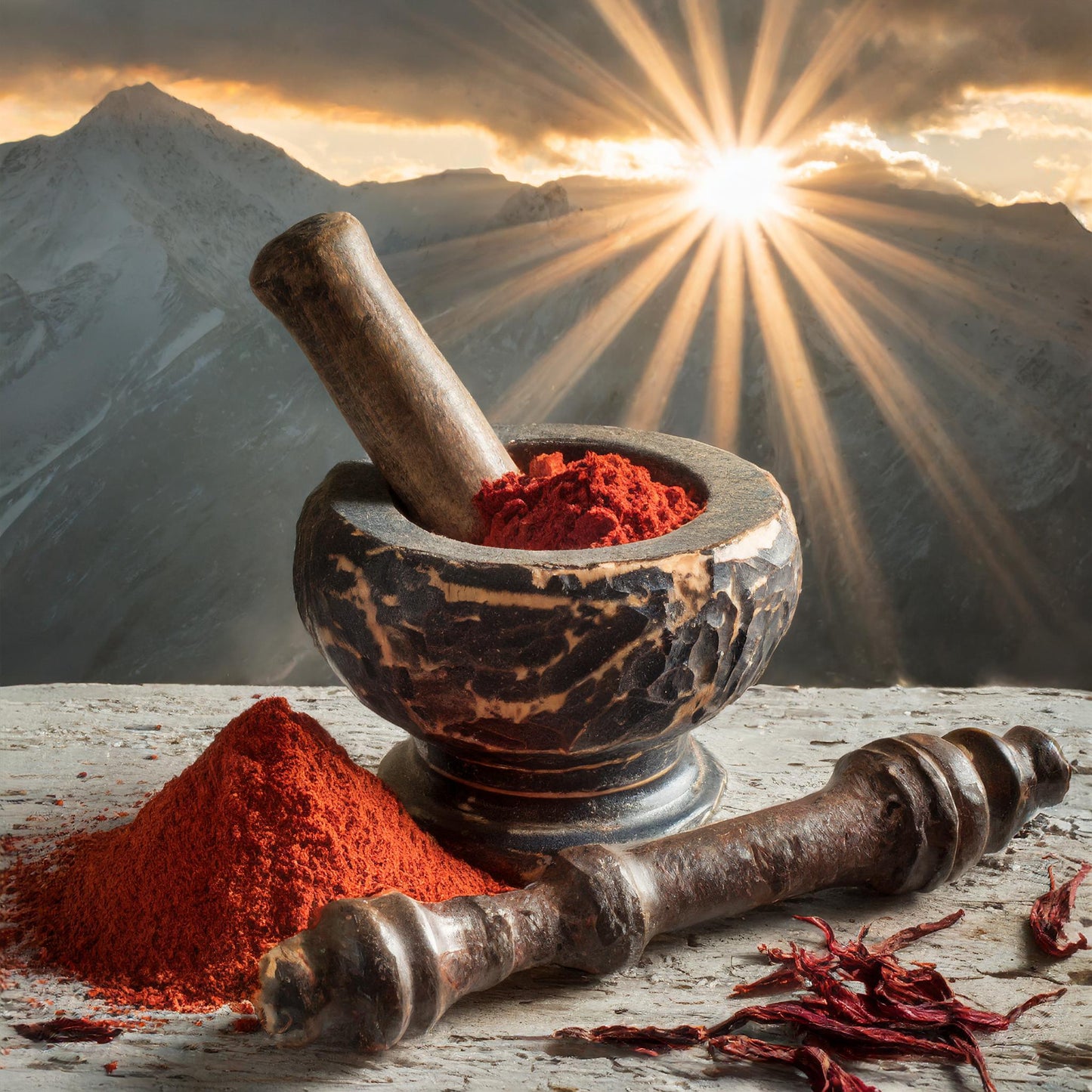Botanical Sage
Blood Root Powder
Blood Root Powder
Couldn't load pickup availability
Bloodroot (Sanguinaria canadensis) is a perennial plant native to eastern North America, known for its vibrant red sap and its historical use in traditional medicine. While it has some medicinal uses, it's important to note that bloodroot contains potent compounds that can be toxic in high doses. Here are some of its potential medicinal uses:
-
Topical Treatments: Bloodroot has been used topically in traditional medicine for various skin conditions, including warts, moles, skin tags, and skin cancer. Its caustic properties can cause the skin to slough off, making it effective in removing abnormal growths. However, this use should be supervised by a qualified healthcare professional, as it can cause damage to healthy skin tissue if used improperly.
-
Respiratory Support: Historically, bloodroot has been used as an expectorant to help clear congestion in the respiratory tract. It may be used to alleviate symptoms of respiratory conditions such as coughs, bronchitis, and asthma.
-
Dental Health: Some oral health products contain bloodroot extract due to its potential antibacterial properties. It may be used in mouthwashes or toothpaste formulations to help prevent plaque formation and gum disease.
-
Anti-inflammatory Effects: Bloodroot contains compounds with anti-inflammatory properties, which may help reduce inflammation in the body. It has been used traditionally to alleviate pain and inflammation associated with conditions such as arthritis.
-
Antimicrobial Activity: Bloodroot contains alkaloids such as sanguinarine, which have antimicrobial properties. It may help inhibit the growth of bacteria, viruses, and fungi. However, its use as an antimicrobial agent is limited due to its potential toxicity.
-
Circulatory Health: In traditional medicine, bloodroot has been used to support circulatory health and improve blood flow. It may be used to alleviate symptoms of poor circulation, such as cold extremities or leg pain.
-
Wart Removal: Bloodroot has been used as a traditional remedy for removing warts. Its caustic properties are thought to help dissolve the wart tissue over time. However, this use should be approached with caution, and it's advisable to consult with a healthcare professional before attempting to use bloodroot for this purpose.
It's important to emphasize that bloodroot is toxic when ingested and can cause severe reactions if used improperly. Internal use of bloodroot is not recommended due to its potential to cause gastrointestinal irritation, vomiting, and other adverse effects. Additionally, bloodroot preparations should only be used under the guidance of a qualified healthcare professional.


